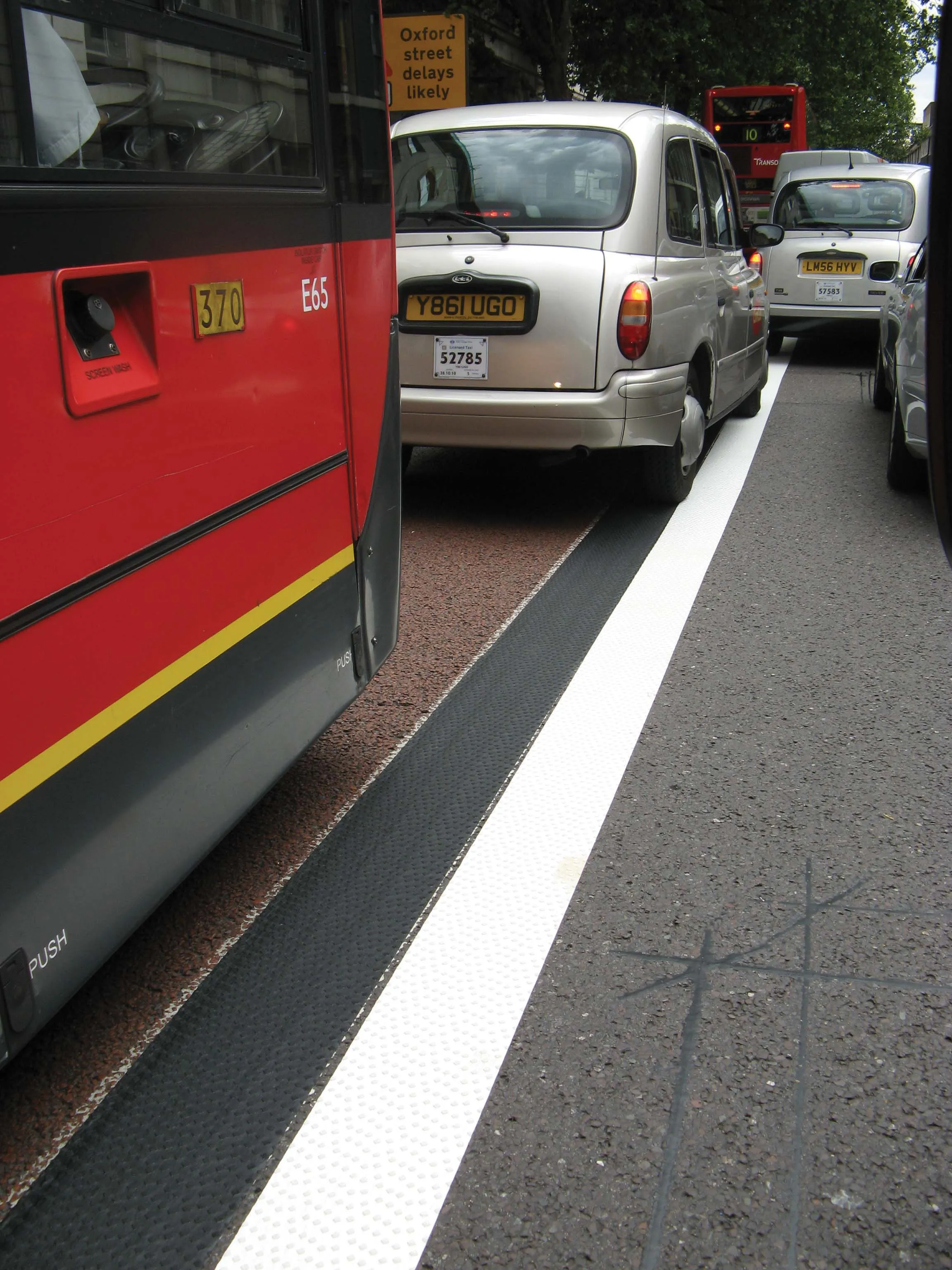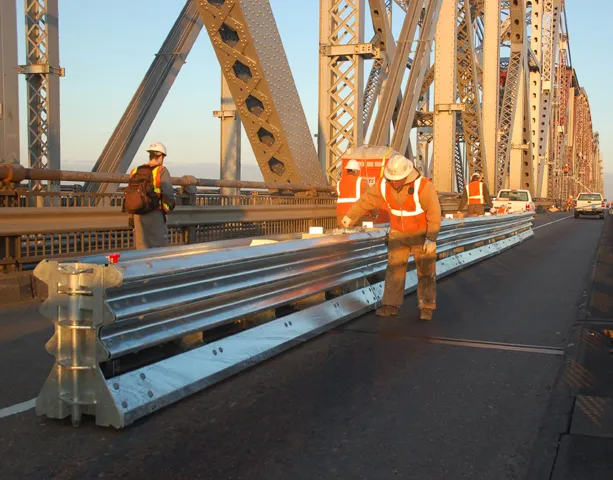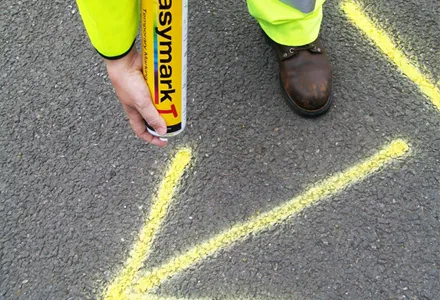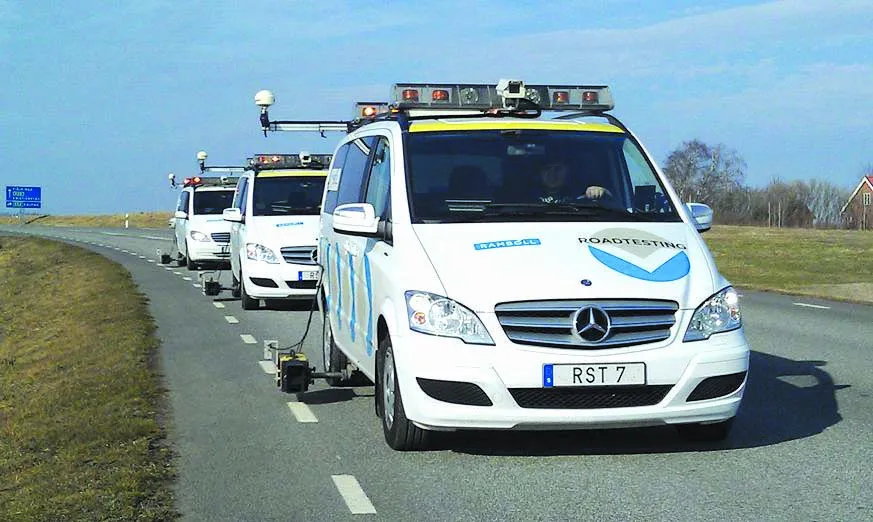According to a recently published report, based on the findings of the Road Safety Markings Association (RSMA), the condition of road markings on the UK’s roads is so poor they require immediate remedial action. This comprehensive survey covered 7,000km of the roads in England, Wales, Scotland and Northern Ireland. It revealed that 47% of markings on all roads (and as much as 52% on motorways) in England are in need of immediate replacement or should be scheduled for replacement in order to ensure they meet
June 30, 2014
Read time: 3 mins

According to a recently published report, based on the findings of the 5149 Road Safety Markings Association (RSMA), the condition of road markings on the UK’s roads is so poor they require immediate remedial action.
This comprehensive survey covered 7,000km of the roads in England, Wales, Scotland and Northern Ireland. It revealed that 47% of markings on all roads (and as much as 52% on motorways) in England are in need of immediate replacement or should be scheduled for replacement in order to ensure they meet the minimum performance levels required.
The revelations in the Lifelines 2014 report were met with dismay by RSMA National Director, George Lee, who commented, “What should our reaction be when half of the road markings are in such a state of disrepair they need immediate replacement?” The RSMA is hopeful that the report’s findings will help agencies and local authorities across the UK to identify where attention is needed to bring road markings up to the required standard.
However152 3M believes it has some solutions to this crucial safety problem and which could be applied quickly and at comparatively low cost. 3M road marking solutions include Stamark Road Marking Tape that is suitable for both permanent (A380ESD) and temporary (A710) applications and the 3M Marker Series 290 Surface Mounted Reflecting Road Stud.
Meeting all the requirements of BS EN 1436, Stamark Road Marking Tape A380ESD by 3M is suitable for long line high-speed road applications, providing superior day and night retro-reflectivity in both wet and dry conditions. It features a pressure-sensitive adhesive on the underlying surface and a highly durable polyurethane topcoat incorporating abrasion-resistant ceramic beads and anti-skid particles. The structured profile of the tape provides reflectivity even in wet conditions by allowing surface water to escape through the channels, boosting driver safety.
Stamark Road Marking Tape A380ESD was used recently on the A494 road in North Wales where drivers were tailgating and frequently exceeding the speed limit. This driving behaviour compounded problems with bridge resilience and an uneven vertical incline.
The objective was to encourage drivers to adopt better lane discipline, reduce speed and maintain following distances. Latest data shows that drivers are keeping their distance, with 70% of drivers leaving a two-chevron gap and with speed levels reduced.
Stamark Temporary Road Marking Tape Series A710 can be easily installed and removed, leaving no ‘ghosting’ or scarring. Ideal for short-term maintenance projects, the tape offers the same skid resistance and day/night retro-reflectivity capabilities as the Stamark Permanent Road Marking Tape.
3M Marker Series 290 Reflecting Road Stud is a high-performance CE-marked permanent surface-mounted reflecting road stud. It utilises Diamond Grade DG3 Technology by 3M on the reflector lens and is constructed with an inner rib contour that provides improved flexibility. Combined with the injection-moulded polycarbonate resin-based body, this provides high impact resistance and increased durability. The studs are designed for direct application to the road surface using 3M-approved hot-melt bitumen or in combination with the 301 metal housing that has been designed specifically for use with the 3M 290 Reflecting Road Stud. Developed by RoadCraft Safety Products and Fleming & Company, the combination of 290/301 creates a road stud that is suitable for roads carrying even the heaviest traffic flow.
This comprehensive survey covered 7,000km of the roads in England, Wales, Scotland and Northern Ireland. It revealed that 47% of markings on all roads (and as much as 52% on motorways) in England are in need of immediate replacement or should be scheduled for replacement in order to ensure they meet the minimum performance levels required.
The revelations in the Lifelines 2014 report were met with dismay by RSMA National Director, George Lee, who commented, “What should our reaction be when half of the road markings are in such a state of disrepair they need immediate replacement?” The RSMA is hopeful that the report’s findings will help agencies and local authorities across the UK to identify where attention is needed to bring road markings up to the required standard.
However
Meeting all the requirements of BS EN 1436, Stamark Road Marking Tape A380ESD by 3M is suitable for long line high-speed road applications, providing superior day and night retro-reflectivity in both wet and dry conditions. It features a pressure-sensitive adhesive on the underlying surface and a highly durable polyurethane topcoat incorporating abrasion-resistant ceramic beads and anti-skid particles. The structured profile of the tape provides reflectivity even in wet conditions by allowing surface water to escape through the channels, boosting driver safety.
Stamark Road Marking Tape A380ESD was used recently on the A494 road in North Wales where drivers were tailgating and frequently exceeding the speed limit. This driving behaviour compounded problems with bridge resilience and an uneven vertical incline.
The objective was to encourage drivers to adopt better lane discipline, reduce speed and maintain following distances. Latest data shows that drivers are keeping their distance, with 70% of drivers leaving a two-chevron gap and with speed levels reduced.
Stamark Temporary Road Marking Tape Series A710 can be easily installed and removed, leaving no ‘ghosting’ or scarring. Ideal for short-term maintenance projects, the tape offers the same skid resistance and day/night retro-reflectivity capabilities as the Stamark Permanent Road Marking Tape.
3M Marker Series 290 Reflecting Road Stud is a high-performance CE-marked permanent surface-mounted reflecting road stud. It utilises Diamond Grade DG3 Technology by 3M on the reflector lens and is constructed with an inner rib contour that provides improved flexibility. Combined with the injection-moulded polycarbonate resin-based body, this provides high impact resistance and increased durability. The studs are designed for direct application to the road surface using 3M-approved hot-melt bitumen or in combination with the 301 metal housing that has been designed specifically for use with the 3M 290 Reflecting Road Stud. Developed by RoadCraft Safety Products and Fleming & Company, the combination of 290/301 creates a road stud that is suitable for roads carrying even the heaviest traffic flow.








